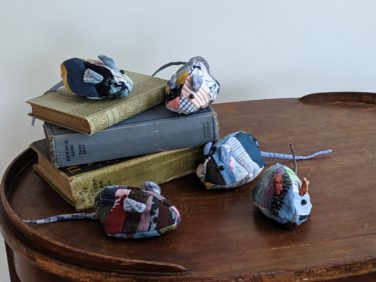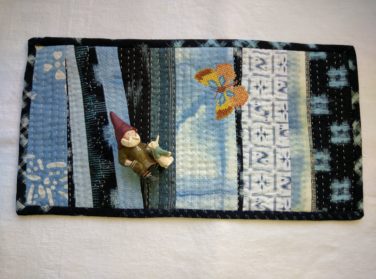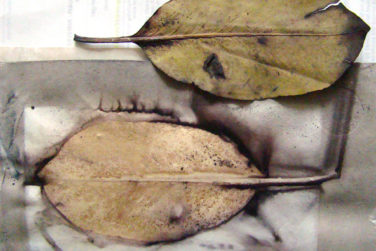Textile artisan Judilee Fitzhugh will lead a textile workshop series exploring several techniques in a hands-on learning environment.

Saturday, February 22: Mouse Bag (stitching) – SOLD OUT
10am – 2:30pm
Slow stitching, the meditative art of hand sewing, is a chance to relax and enjoy the rhythmic dance of needle and thread as we construct a Japanese-inspired bag to celebrate the New Year. Using new and vintage fabrics, basic hand stitching techniques, and simple construction we will construct a mouse-shaped bag appropriate for display or gift-giving.
All project materials will be provided by the instructor, students should bring a sack lunch, reusable water bottle and a small sewing kit if desired. Coffee/tea and light snacks are provided.

Saturday, May 23: Journey into Indigo & Shibori – SOLD OUT
10am – 4:30pm
An exploration of shibori and the natural indigo dye vat. Over the course of this workshop students will learn the history and importance of indigo and the art of shibori, one of the oldest indigo dyeing techniques in Japan. In the morning, Judilee will introduce students to the history of indigo, how to make a natural reduction indigo vat, traditional fiber resist techniques for shibori, and how to prep fabrics for the dye vat. The afternoon will be focused on dyeing the shibori fabrics and sharing the results of the dyeing session.
All materials will be provided in the workshop. A silk scarf and an assortment of cotton fabrics will be provided; students may bring a cotton t-shirt, linen napkins, cotton socks, prepared knitting or weaving yarns, or up to one yard of natural fiber fabric to be dyed; these materials should be pre-washed and dried without fabric softener. Students are encouraged to bring an apron and gloves. Any student that would like to take home a sample of the indigo vat for further exploration, is asked to bring a one-gallon container with a tight-fitting lid, such as a paint bucket. Students should bring a sack lunch and a reusable water bottle.

Saturday, August 8: Boro Mending – SOLD OUT
10am – 3:30pm
“Thrift is poetic because it is creative; waste is unpoetic because it is waste.” (G.K. Chesterton, What’s Wrong with the World). Every country in the world has a unique aesthetic of mending. The term “boro” serves to describe profusely stitched and mended Japanese textiles that receive an extended life with an abundance of functional but beautiful handwork. In this class, we will piece, patch, appliqué, and stitch a small cloth suitable for a table mat or personal tool bag. Optionally, students may bring a cloth to mend: denim jeans or jacket, moth-eaten wool, thread bare cotton. A variety of stich work will be sampled.
All materials are provided. Optional: students may bring a personal cloth that needs repair to use as a base for the boro patch and stitch. Students should bring a sack lunch and a reusable water bottle.

Saturday, November 7: Contact Printing – SOLD OUT
10am – 3:30pm
Also called botanical printing or eco-printing, contact printing is a method of transferring the natural pigments found in leaves and plant material directly to cloth or paper without the use of auxiliary materials. We will use fallen leaves and a variety of techniques to print on paper and cloth, including a one-of-a-kind scarf that will embody the spirit of the Garden in autumn.
All materials are provided. Students are encouraged to collect fallen autumn leaves from their yard for experimentation. Students should bring a sack lunch and a reusable water bottle.
About Judilee Fitzhugh
Judilee Fitzhugh is a textile artisan who specializes in natural plant dyes and couture sewing. A tour of duty in Japan with the U.S.Navy led to a profound Japanese influence and a lifelong affection for indigo and plant fibers. Her finely crafted work combines natural objects with vintage fabric remnants, hand weaving and surface design to portray a single moment in history